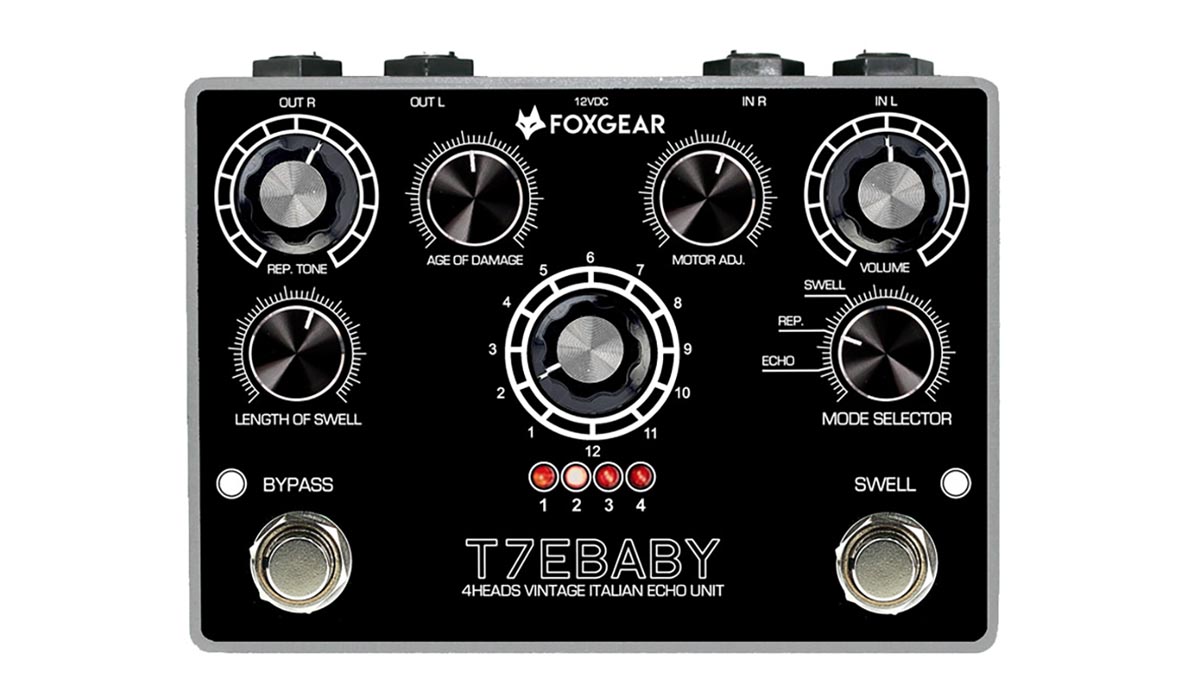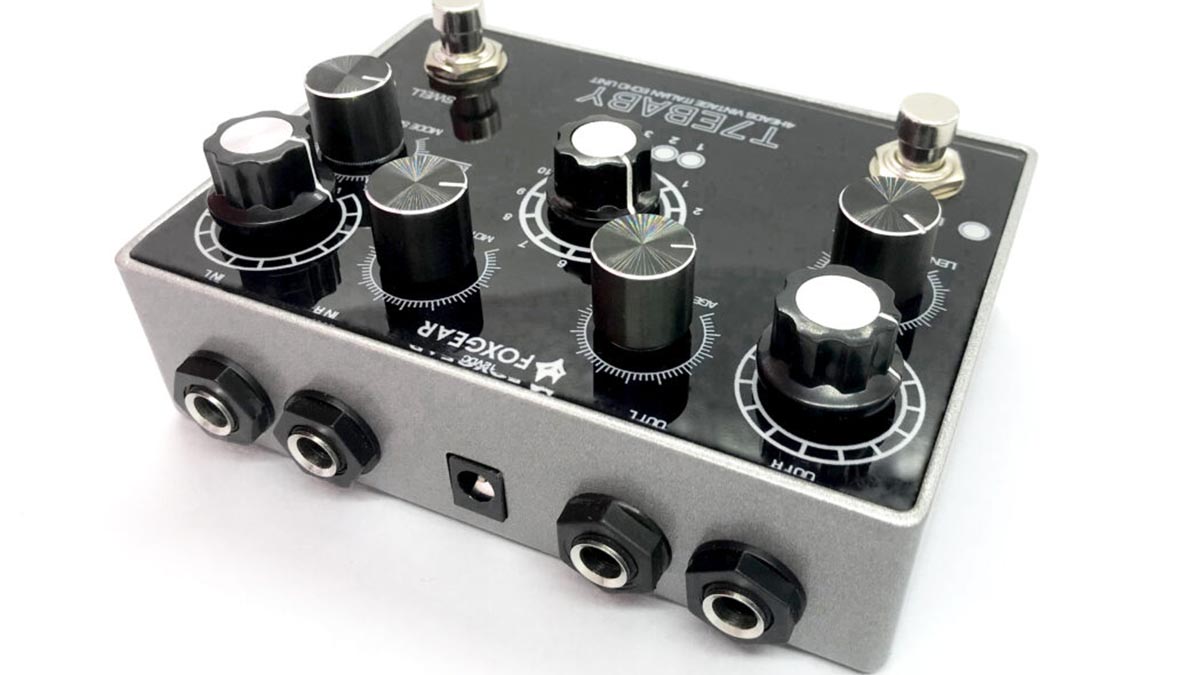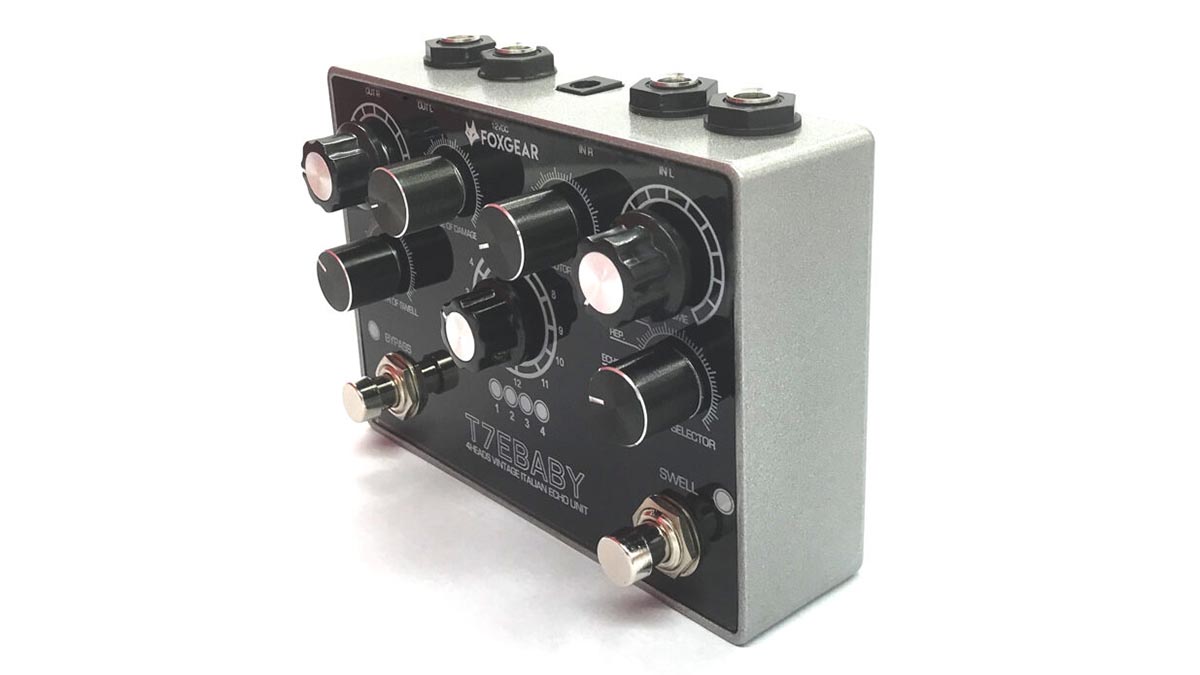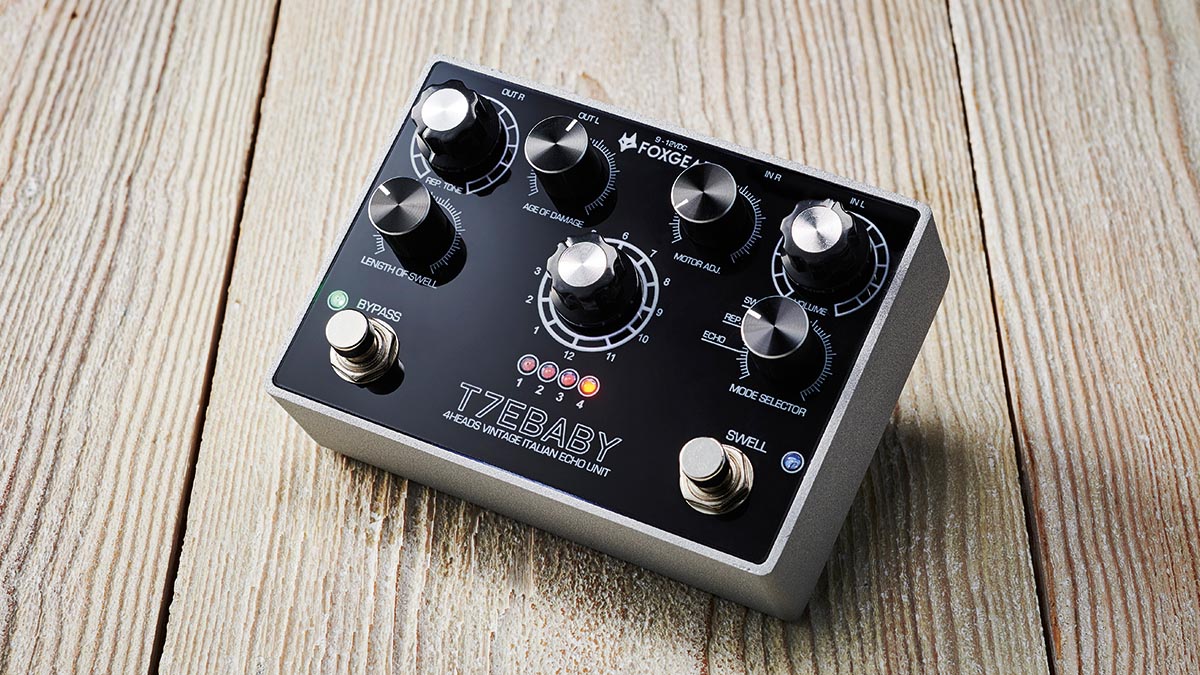Guitar World Verdict
The repeats here work great with guitar, and this is an excellent pedal in its own right, chock-full of gorgeous vintage-style echo variations.
Pros
- +
Echorec functionality.
- +
Multi-tap echos.
- +
Tonal adjustment for repeats.
- +
Compact size.
- +
Stereo operation.
- +
Footswitchable swell.
Cons
- -
Head selector knob is a bit wobbly.
- -
Tricky to balance tone with Length Of Swell.
You can trust Guitar World
The Foxgear T7E Baby is designed as a direct emulation of a Binson Echorec, the Italian echo unit that used a rotating magnetic drum rather than tape. Among others, the Binson range included the Echorec Baby and the T7E Echorec 2, which was used by David Gilmour from 1968 up to 1977.
Foxgear pedals are made in China, but the company has its roots in Italy where it is part of a family that includes the boutique Gurus and Baroni-Lab brands. The T7E Baby is, in fact, based on the Gurus Echosex 2 T7E, losing that pedal’s integral valve but with pretty much the same functionality at a much lower price.
Offering both mono and stereo operation, the pedal is a practical size for pedalboards while still accommodating two footswitches.
To get your head around its controls it’s necessary to understand the original Binson, which had a recording head plus four playback heads around the edge of the drum, selected singly or in combination. The 12-position switch for selecting the options is seen again here, with red LEDs indicating which are active.
There are three working modes – Echo, Rep and Swell. Echo offers one echo tap for the selected head combination, and Rep (Repeats) adds feedback (adjusted using the Length Of Swell knob) to the selected head combination.
The third mode, Swell, applies feedback to all four heads, effectively delivering a reverb-like wash of sound. If either of the other two modes are selected, this third mode can be brought in using the Swell footswitch.
Sounds
The Motor Adj button adjusts the delay time. While the original machine had a maximum delay time somewhere just above 300ms, the maximum here runs to 880ms for more versatility.
All the latest guitar news, interviews, lessons, reviews, deals and more, direct to your inbox!
The sound of the repeats is true to your input tone, but the trail dissipates and blends nicely as it fades, not unlike a good BBD analogue delay. You can make that more radical with the Tone knob, moving away from the warmer, cleaner sound towards thinner, distorted and more percussive repeats as the trail progresses.
The Tone knob is very interactive with the Length Of Swell knob – so the two have to be balanced to stop the repeats taking off into self-oscillation – but find the sweet spot and you can dial in settings with a long cloud of echoes.
Modulation can be added with the Age Of Damage knob, which replicates the effect of worn mechanical parts in an original machine that resulted in an irregular speed of the main drum. It goes from a really subtle sonic shift to more obvious pitch variation.
Selecting a single head and using feedback can give you all the standard delays you’d get from a regular delay pedal, starting from just into slapback territory up to that maximum of 880ms. But it’s the multi-tap head combinations that make this pedal special.

Those combination settings comprise five with two heads, two with three, and one featuring all four. As the heads are equidistantly spaced you can set musical intervals. If head four is a quarter-note, the other three would be 16th, eighth and dotted eighth notes.
There are plenty of potential uses for all of them setting up a pattern of repeats, but we particularly liked programs 6 and 7 with respectively an eighth/dotted eighth and a dotted eighth/quarter-note, which were great for the rhythmic delay styles U2 is known for.
Regardless of the 12-way switch position, the Swell setting is always there like a second preset you can engage at any time, providing an alternative ambience as the feedback from four heads creates a distinctive and expansive sonic wash.

Verdict
A refurbished T7E in full working condition at $/£5k-plus (not to mention maintenance costs) is way out of reach for most of us, so a pedal such as this is a very attractive alternative indeed. It’s compact and boasts a control surface that can replicate the original’s operation yet goes beyond its remit.
Does it do the Binson sound justice? Well, we didn’t have an original unit for an AB test so we couldn’t assess quite how close the repeats sounded to an original, but does it really matter?

Specs
- PRICE: £199
- ORIGIN: China
- TYPE: Echo pedal
- FEATURES: True Bypass assisted by relay, 86ms to 880ms delay time (Head 1 86-200, Head 2 172–422, Head 3 258-625, Head 4 334-882), footswitchable Swell mode
- CONTROLS: Repeat Tone, Age Of Damage, Motor Adj, Volume, Length Of Swell, Head combinations switch, Mode selector switch (Echo/Rep/Swell), Bypass footswitch, Swell footswitch
- CONNECTIONS: Standard inputs (L&R), standard outputs (L&R)
- POWER: 9V-12V DC adaptor 140 ma (not supplied)
- DIMENSIONS: 127 (w) x 95 (d) x 50mm (h)
- CONTACT: Foxgear
Trevor Curwen has played guitar for several decades – he's also mimed it on the UK's Top of the Pops. Much of his working life, though, has been spent behind the mixing desk, during which time he has built up a solid collection of the guitars, amps and pedals needed to cover just about any studio session. He writes pedal reviews for Guitarist and has contributed to Total Guitar, MusicRadar and Future Music among others.


